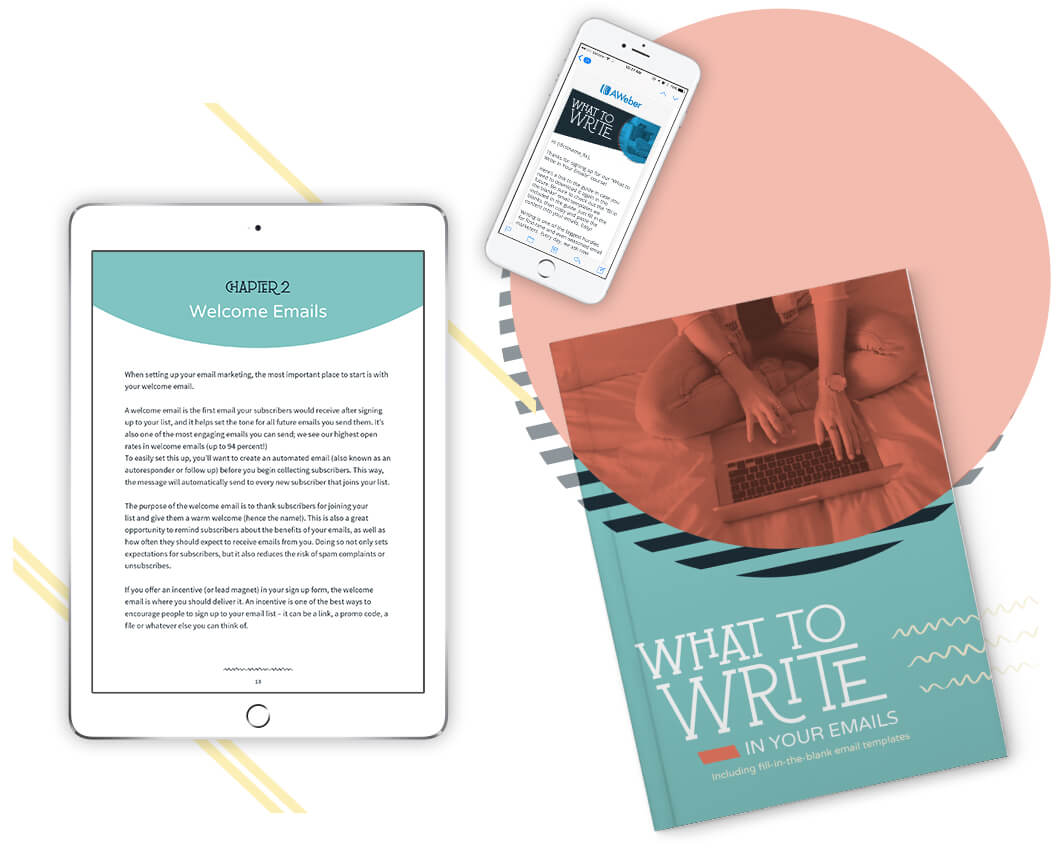Creating a consistent flood of jaw-dropping emails become a powerful business asset used to generate interest in your content.
These emails encourage followers to share your work, and, the fun part, spur conversion and sales.
I imagine that you went ahead and slapped together an email list.
You probably have a growing number of subscribers on it, too.
However, it’s most likely neglected because it’s all too common to jump on the idea of building a list (since so many people talk about it) yet it’s not being maintained or nurtured.
You have the best intentions to make email marketing work for your website but the majority of your work, with the list, is just releasing newsletters and the occasional attempt at promoting a product (which doesn’t fly very well and receives very little reception, and conversions).
The problem is that your emails aren’t engaging your subscribers.
So how do you go about writing jaw-dropping emails that create sales? Let’s get to it.
Note: Some links point to affiliated resources. We receive a commission if you choose to purchase the item, letting us continue writing these awesome guides. They cost nothing extra if you decide to purchase or subscribe to the services.
Master Jaw-Dropping Emails Headlines
The first point of entry with gaining the click comes from the email subject line.
This is the text that appears in their inbox and should be catered to peak interest in the recipient. No click means the message is lost in the sea of information. But, once you do get the click, the battle is half over.
Common Templates for Headlines
Are you feeling stumped about what you’ll write? Try giving these ‘archetypes’ a shot:
- Actionable – Get your recipients to take action based on actionable subject lines such as “Do X to receive Y”. This type of headline is direct and immediately shares what the reader will be doing in order to obtain a goal.
- Clear and Concise – Keep it clean and to the point with this one such as the headline of this article. This type of subject line doesn’t beat around the bush – it tells exactly what the email and message are about.
- Intriguing – Peak interest in your list by using subject lines that ask questions, introduces scenarios, or a bit of mystery. These email subject lines, such as “You don’t want to miss this …” gets the reader’s attention because it’s a cliff-hanger, and they’ll want to know the conclusion.
- Entertaining – Get a laugh out of your readers by using entertaining subject lines such as “I accidentally pooped myself when I saw these stats”. Part mystery, part humor, these headlines break the ice in the conversation and then leads to some serious content.
You’re by no means limited to these four types of headlines but they will give you a solid template to start creating jaw-dropping emails.
Spend a bit of time with pen & paper coming up with headlines over and over again – you’ll eventually nail one that blows you away.
Side-note: Avoid the usage of spam keywords which will flag your message and send it off to the spam folder (or worse, get you blacklisted by receiving too many complaints).

Hook ‘Em Early, Hook ‘Em Quick
The hook is what pulls the recipient into the conversation.
The hook is a combination of multiple points of intrigue and connection:
- Personalization
- Active copy
- Alignment
- Benefits (over features)
The personalization of an email creates a connection because people immediately perk up when they hear (or read) their name. It’s directed. It wouldn’t matter if they’re in the middle of a crowd – if they hear their name, they turn their head. Opening with their name (or even using it in the subject line) points the message their way and gives them a reason to continue into the body copy since the message is treated like a conversation (one-to-one).
The active form of writing in which you place the important information up front speeds the individual through the copy. Action copy such as “go now” versus “please consider” may feel a bit pushy when you’re writing it out but it’s needed because it provides guidance for the individual.
The alignment of the email should match the subject line to create congruency in the subject. Likewise, the message should align with the personal goals of the reader so they understand the benefits and what they’ll get out of your email. Everything about your email should reflect what you represent through your website, social interaction, and personal convictions; be true in your copy.
The benefits should always be front-and-center when you’re hooking the reader. People buy mainly based on an emotional response. Features are a logical approach to sharing information but the benefits can be felt; readers project the outcome of success in the topic you’re covering – this sets them into an emotional state and gives them a reason to learn more by digging deeper into the body content.
Need a few examples of a hook?
- “You may have given a shot at traffic generation but be prepared to be blown away with …”
- “Building your business website gives you an opportunity to …”
- “Stop what you’re doing because it’s all wrong …”
In many ways, the hook is a secondary headline embedded in the opening of your email; align it to the subject line and you’ll deliver a one-two punch to the cerebral core of the reader’s mind.
Lead with a Story, Close on Emotion
I once had an email list nearly 4,000 subscribers strong but I decided it wasn’t my thing so I deleted it.
This is a true story but the context and intention of this little blurb are that using a story, for your message, is far more engaging than corporate speak.
The story needs a few elements of engagement:
- Character
- Proper Tone
- Relatable instances
The character in your story could come from your personal experience and struggle with your topic but you could use a hypothetical character to get your point across. This character is very similar to the picture you’ve formed for your customer avatar (their background, experience, budget, etc). Using a character gives the reader’s something to attach to; they become part of the story much like reading a novel or short story.
The tone of your email should, usually, stay relaxed. Corporate speak and jargon lose your readers because it takes them out of the story; writing in a relaxed, conversational tone lulls the reader through your tale but still keeps them on the edge of their seats because it’s as if you’re telling a story directly to them as if they’re sitting across from you.
The relations you’re making in the story are moments where the reader can say “Yeah, I know what they’re talking about there”. These relations, placed at the right time, bring the reader into the fold and edges them deeper into the information. Think of them as micro-chapters within your email story.
Need some examples?
- Sign up for the newsletter of your favorite online store
- Follow (and subscribe) to well-known affiliate marketers
- Consider taking a class in storytelling and creative writing
Next time you’re talking with a friend, family member, or business associate about what you do or when you’re explaining a particular strategy – record your conversation, transcribe it, and pick & pull pieces of it for your next email. You’ll be surprised how well you’re able to explain something when conversing with close members of your social circle in comparison to forcing yourself to write jaw-dropping emails from scratch.
Seal the Deal with a Call-to-Action
Last, and not least, is whether or not your emails will get people to take action and click through your links.
Up to this point, you’ve managed to get your recipient to open the email, connect with the story, dig into the content, and place them on the edge of their seats for the epic conclusion.
The call-to-action, whether the purpose is to have the reader buy a product, share your information, leave feedback, or whatever your most desired response may be, should be visible and, without any question, straight-forward.
Do not do the following:
- Bury your CTA in the email without some form of visual stimulation
- Only use your CTA once throughout the entirety of the email
- Use passive language (and hope they take action)
- Leave out tracking information
The call-to-action should be peppered throughout your email so readers can take action at any given point when consuming your information. The CTA should be quite visible from the rest of the content through text formatting and add visual stimulation around the link to draw in the eye whether that is through the use of a button or arrows.
The CTA should also carry an active tone which tells people exactly what you want them to do. And, not to forget, you’ll want to track the click through on your links so you can measure the response and use the stats for improvement in future emails.
In conclusion, the strategy for getting wild open and click-through rates on your email comes down to your ability to peak interest in the recipient, draw them in through a story, explain the benefits about your topic, and nudge them through your link using an active voice.
As a practice, consider launching a secondary email list specific for testing purposes.
Try out new formats, subject lines, and email content on this group, measure the response, and then use what you’ve learned on the larger list you own.
Resource: Writing Better Emails
Looking to one-up your email marketing by crafting better emails? But, having trouble?
Aweber has a fantastic resource outlining 45+ email templates great for creating engagement and clicks.
Check it out, we think you’ll find it quite helpful!





